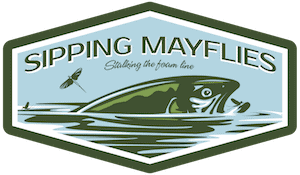Greased Line Fly Fishing Tips
Jan. 9th, 2022
Most fly anglers fail to consider using grease, sometimes referred to as “gink” or “floatant,” on their fly line setups. There are some major advantages you’re missing out on by not understanding the role grease can play in your success on the water. Read on to be enlightened.
Decades ago, fly fishers used fly lines made of braided silk. The problem was, their fly line would quickly sink underwater. The solution they discovered was to grease their fly lines. This greatly slowed the sinking process and kept their fly lines on the surface longer.
Nowadays, things are a bit different, but the concept has remained unchanged for 100 years. It’s this concept you’ve really got to learn.
I hooked-into this nice brown trout on a dry fly almost immediately after greasing my presentation.
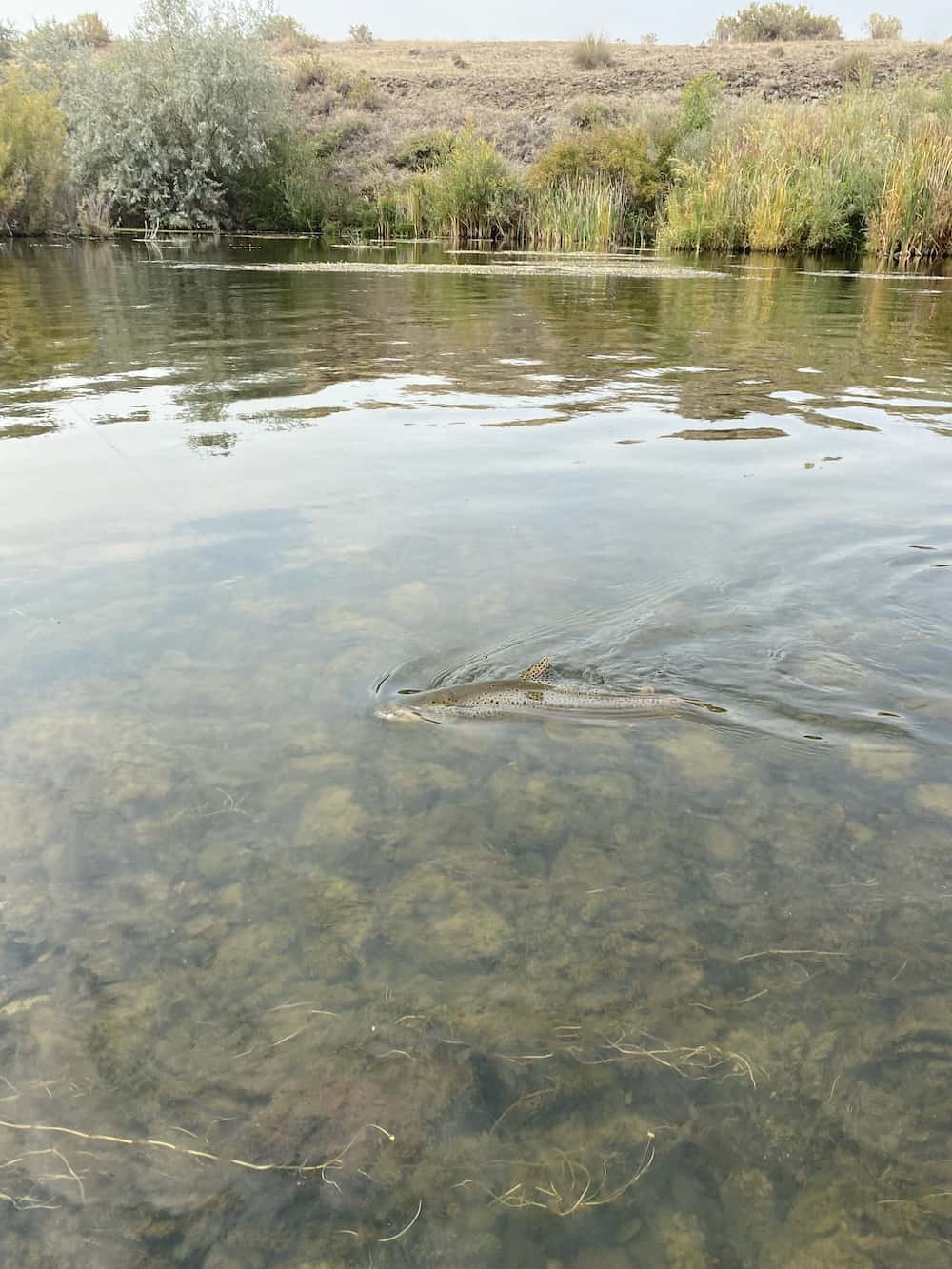
Greased Fly Line vs Greased Leader
I mentioned above that things have changed over the decades. Specifically, we now have specially-designed fly lines that float right out of the box–sometimes for years. We don’t grease our fly lines any longer–it’s completely unnecessary.
So, forget about greasing your fly line. If your fly line is sinking, it’s possible that there are one or more small penetration points where water is leaching into your line. You may have inadvertently stepped on it with your wading boot cleats. Regardless, if you see this, it may be time for new fly line. The other possibility is that your fly line is filthy and just needs to be cleaned.
However, it’s hugely advantageous to grease your leader and tippet. Your leader is tied to the end of your fly line, usually with a loop-to-loop connection. It’s made out of monofilament or fluorocarbon. Your tippet (also made of mono or fluoro) is then tied to the end of your leader, usually using a triple-surgeon’s knot or a blood knot.
In order to catch big brown trout like the fish below, you’ll want to grab every advantage you can.
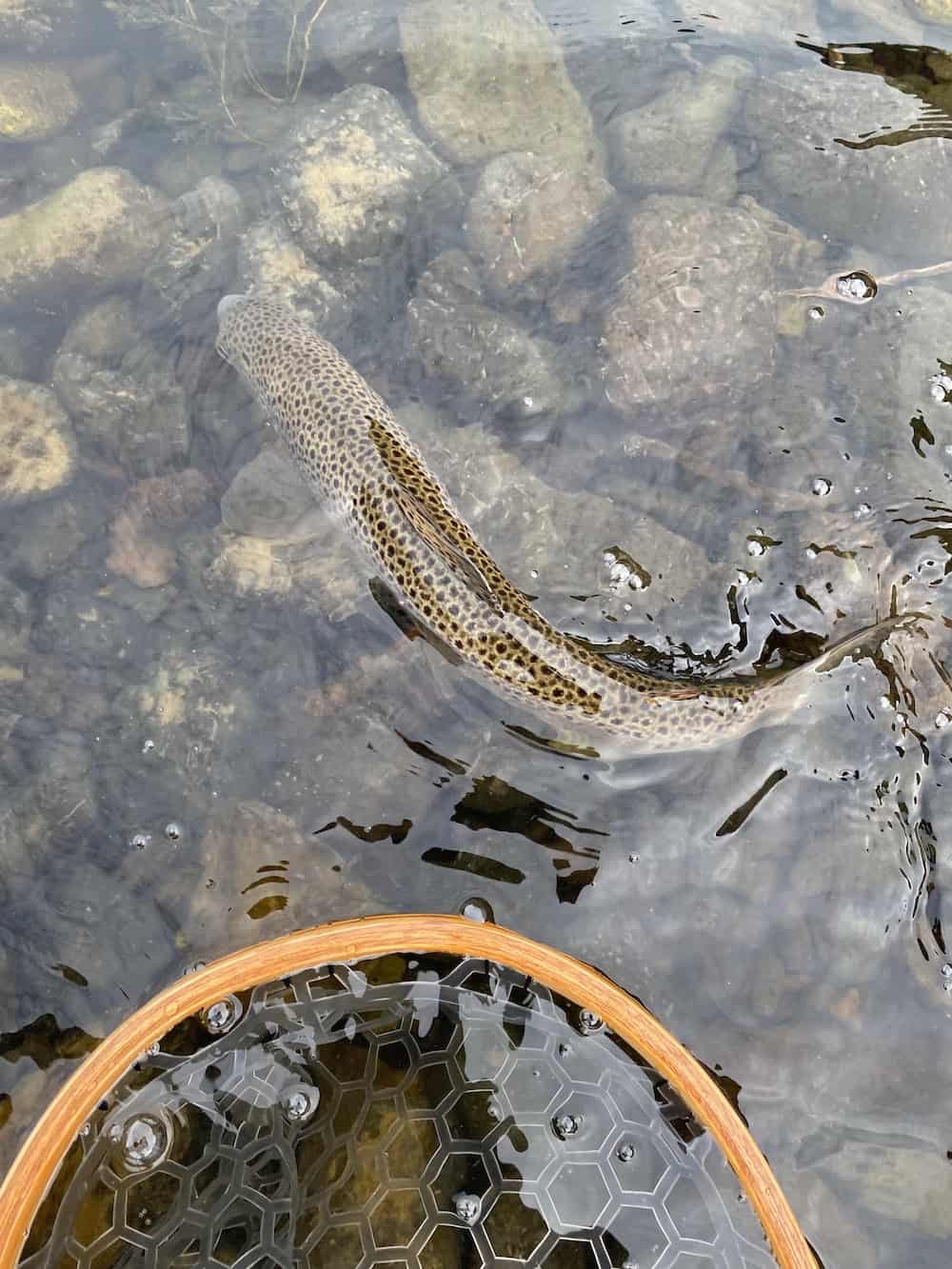
What is Fly Fishing Grease?
Fly fishers call it line “grease” because it’s usually a petroleum byproduct. It generally has the consistency and look of vaseline. Some line floatants (aka “grease”) are silicone-based, and some are even wax-based, but we make no delineation between them. It’s “grease” or “floatant,” for all intents and purposes.
The grease you put on your fly leader and tippet has a specific gravity below the specific gravity of water, and that’s why it floats.
The Greased Leader Advantage
You might be familiar with fly floatant–the very similar concoction you can apply to your flies to help them float. In other words, it helps keep your fly on top of the water’s surface.
The advantage is, of course, that if the fish are feeding on the water’s surface, your fly will look natural–rather than floating below the surface. When your fly is supposed to be on the surface of the water, but is waterlogged and sinks, it’s called a “drown” fly. It’s something to be avoided.
Along these lines, you also want your leader and tippet floating on the surface. If your leader and tippet are sinking below the surface, they may pull your fly under too. Not good.
I can’t prove this, but a sunk leader and tippet may also be more noticeable to trout. It also makes “flossing” a trout more likely–another disadvantage.
To my eye, grease also seems to prevent the leader and tippet from breaking through the water’s surface tension as easily. I’m not sure if it’s simply displacing the water, but it works.
Don’t miss a related article I wrote explaining how to clean your fly line, where I also show you how to apply line dressing immediately after cleaning. This is vital information for all fly anglers.
When Should I use Grease?
When you’re dry fly fishing you’ll want to apply floatant and/or dessicant to your fly very regularly, but it’s usually only necessary to grease your leader and tippet once per outing (at the beginning, before you start fishing).
If you’re nymphing, using wet flies, or tossing streamers, there’s absolutely no need to grease your line because you’ll be focusing on subsurface fishing. There’s no advantage to floating leader and tippet in these scenarios.
If you’re using dry flies tied with CDC feathers, don’t use normal fly floatant because it’ll actually sink your fly. CDC stands for Cul de Canard, and they’re feathers that are taken from near the preen gland on a duck. Here’s an article I wrote explaining what CDC is and how it relates to fly fishing.
The only floatant I’ve found that you can use on CDC feathers is Lochsa by Loon outdoors.
Apply grease (ie. floatant) to your leader and tippet before you apply sunscreen to your skin. Sunscreen degrades fly lines, leaders, and tippets. Some people even believe trout, like the one I caught below, are repulsed by the detectable chemicals in sunscreen.
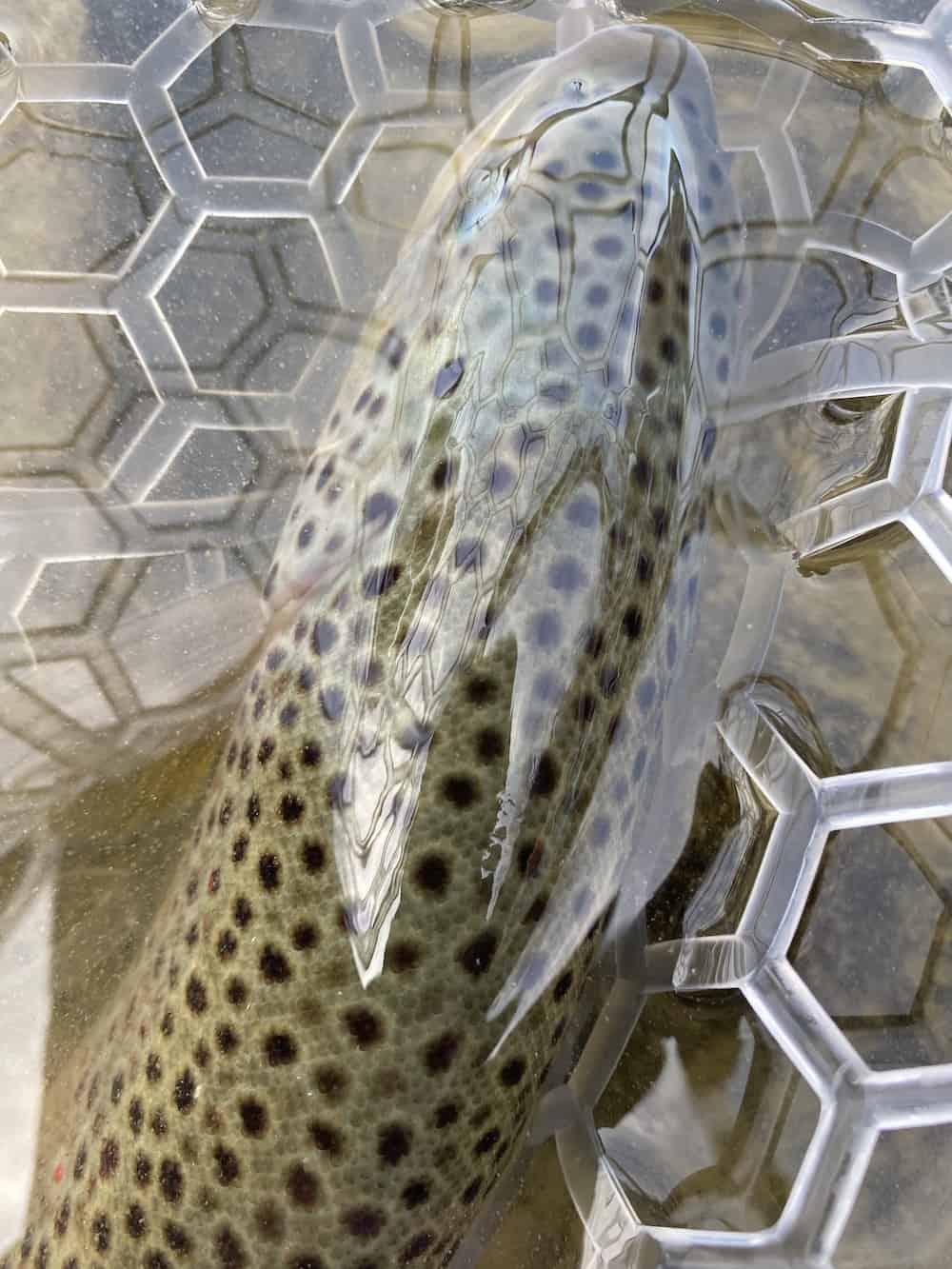
The Best Fly Line Grease
Payette Paste by Loon Outdoors is the best fly leader and tippet floatant I’ve found. It’s all I use. You can use it as fly floatant as well.
It’s temperature stable, meaning it maintains its consistency whether it’s hot or freezing outside.
Just use your middle finger to get a dab of grease, and then rub it together with your thumb. Then slide your leader and tippet through your fingers. It’ll go on nice and clear, and you’ll be set for the day.
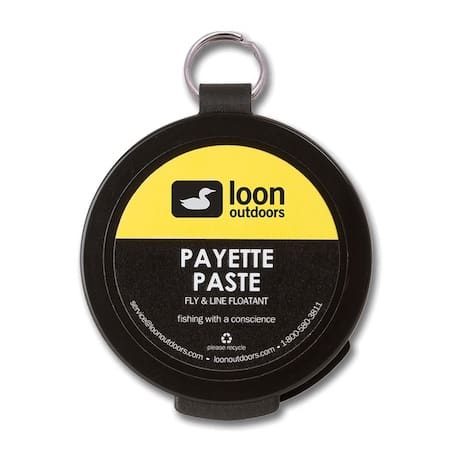
Remember when I mentioned that if your fly line is dirty, it can sink? It’s true. You should be cleaning your fly line every few outings, if not every outing. Your line may not look dirty, but if you’re not cleaning it regularly, I can guarantee you it’s covered in layers of microscopic dirt and sludge.
Rio’s Fly Line Cleaning kit is a product I always have in my vehicle. Sometimes I clean my fly line with some good old soap and warm water in the sink, but if I’m on the road, this comes in handy. Not only will you prolong the life of your fly line by keeping it clean, but your casts will sail through the rod guides noticeably faster. That’s a fact.
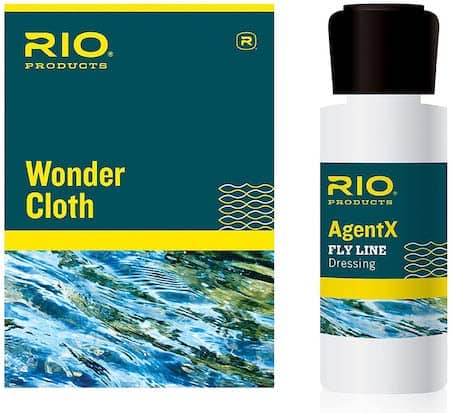
Summary
Greased line fly fishing serves a dual purpose. It not only helps float your leader and tippet (due to its low specific gravity), but it also helps keep your leader and tippet floating on top of the water’s surface tension. This, coupled with keeping your fly line clean so it floats efficiently, will serve you well.
It’s my hope that I’ve been able to convince you to give greased line fly fishing a try. Success on the water is the culmination of many things working together in concert, and using floatant on your leader and tippet is a helpful piece of that puzzle.
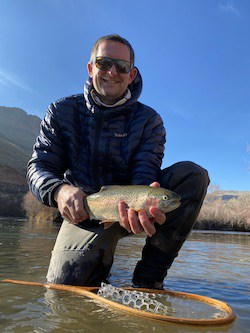
About the Author
My name's Sam and I'm a fly fishing enthusiast just like you. I get out onto the water 80+ times each year, whether it's blazing hot or snow is falling. I enjoy chasing everything from brown trout to snook, and exploring new waters is something I savor. My goal is to discover something new each time I hit the water. Along those lines, I record everything I learn in my fly fishing journal so I can share it with you.
Follow me on Instagram , YouTube, and Facebook to see pictures and videos of my catches and other fishing adventures!
